Archive
Hanover Gallery
- Hanover Gallery
- Art Gallery
The Hanover Gallery was founded by Erica Brausen and dedicated to interwar modernism and contemporary art, supporting the early careers of Francis Bacon, Lucian Freud and Niki de Saint Phalle.
Word Count: 30
32a St. George’s Street, Hanover Square, London W1.
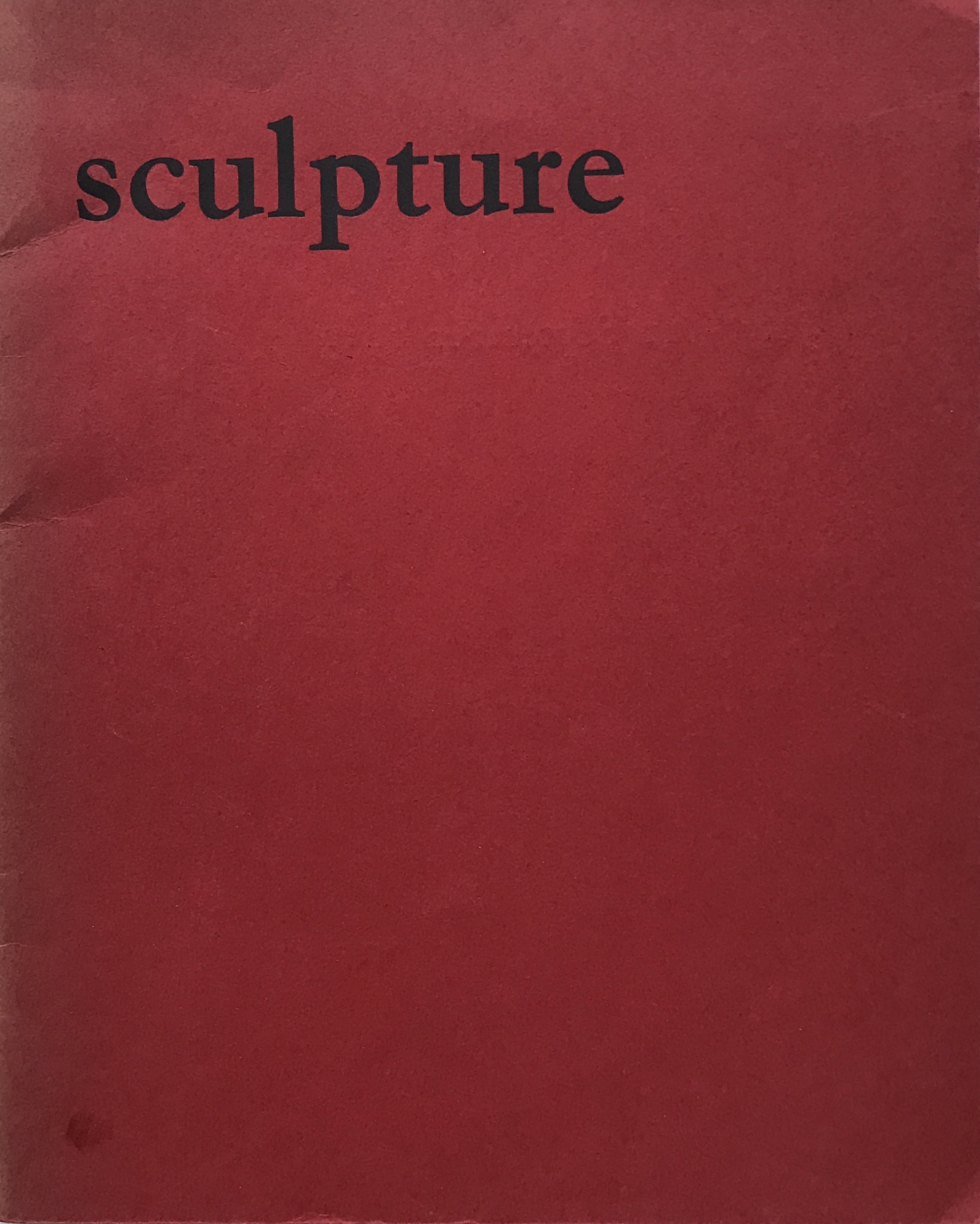
Sculpture, exh. cat. Hanover Gallery, London, 1959, cover (METROMOD Archive). The group exhibition presented established artists and works of a younger generation: Arp, César, Clatworthy, Effront, Kemény, Maillol, Marini, Picasso amongst others. 
Sculpture, exh. cat. Hanover Gallery, London, 1959, title page (METROMOD Archive). 
Sculpture, exh. cat. Hanover Gallery, London, 1959, double page with works of Kemény (METROMOD Archive). 
Sculpture, exh. cat. Hanover Gallery, London, 1959, double page with works of Maillol (METROMOD Archive). 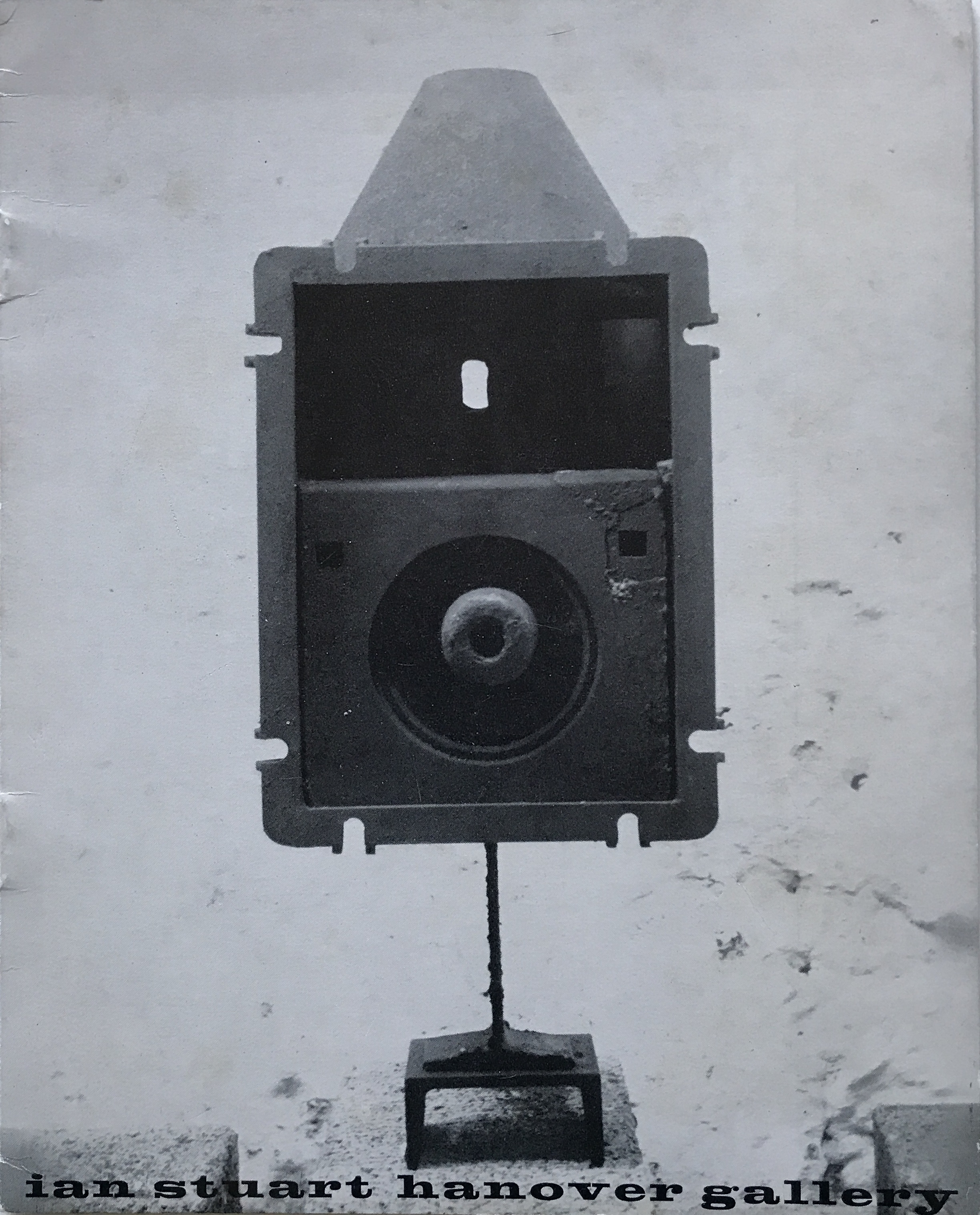
Ian Stuart. Sculpture, exh. cat. Hanover Gallery, London, 1964, cover (METROMOD Archive). 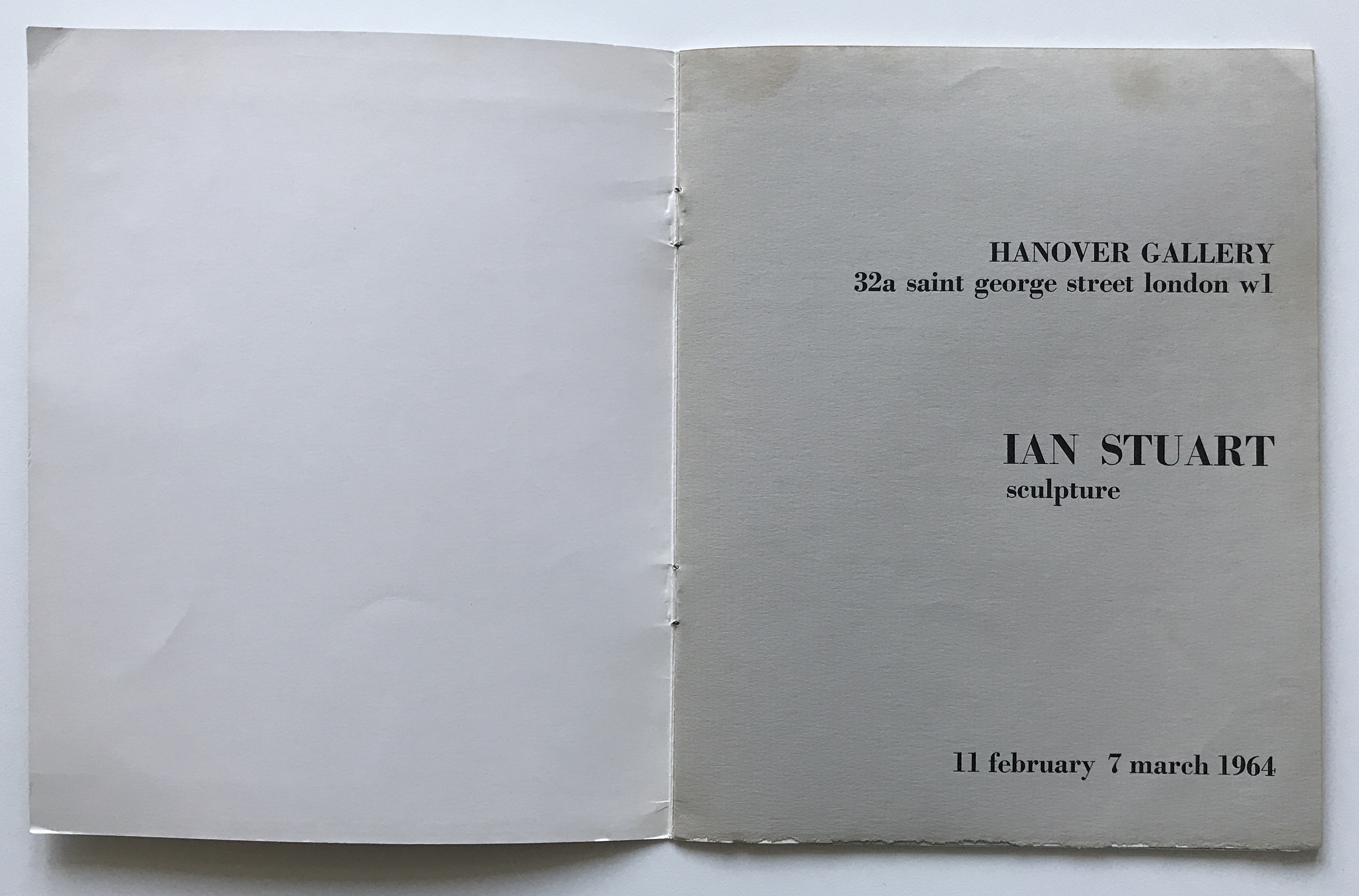
Ian Stuart. Sculpture, exh. cat. Hanover Gallery, London, 1964, title page (METROMOD Archive). 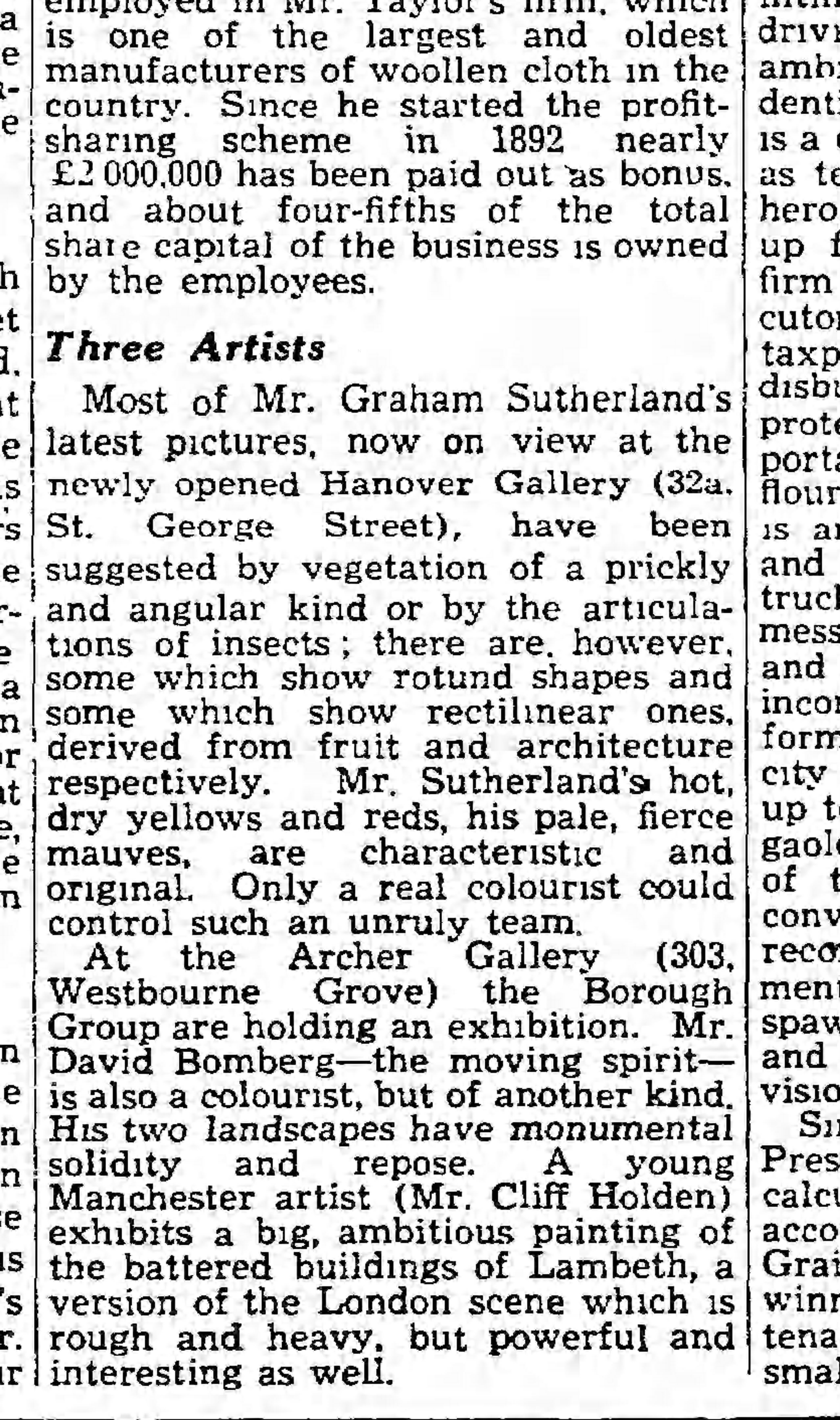
Private Wire. “Our London Correspondence.” The Manchester Guardian, 9 June 1948, p. 4 (Photo: Private Archive). Article on the Hanover Gallery’s opening exhibition Graham Sutherland. 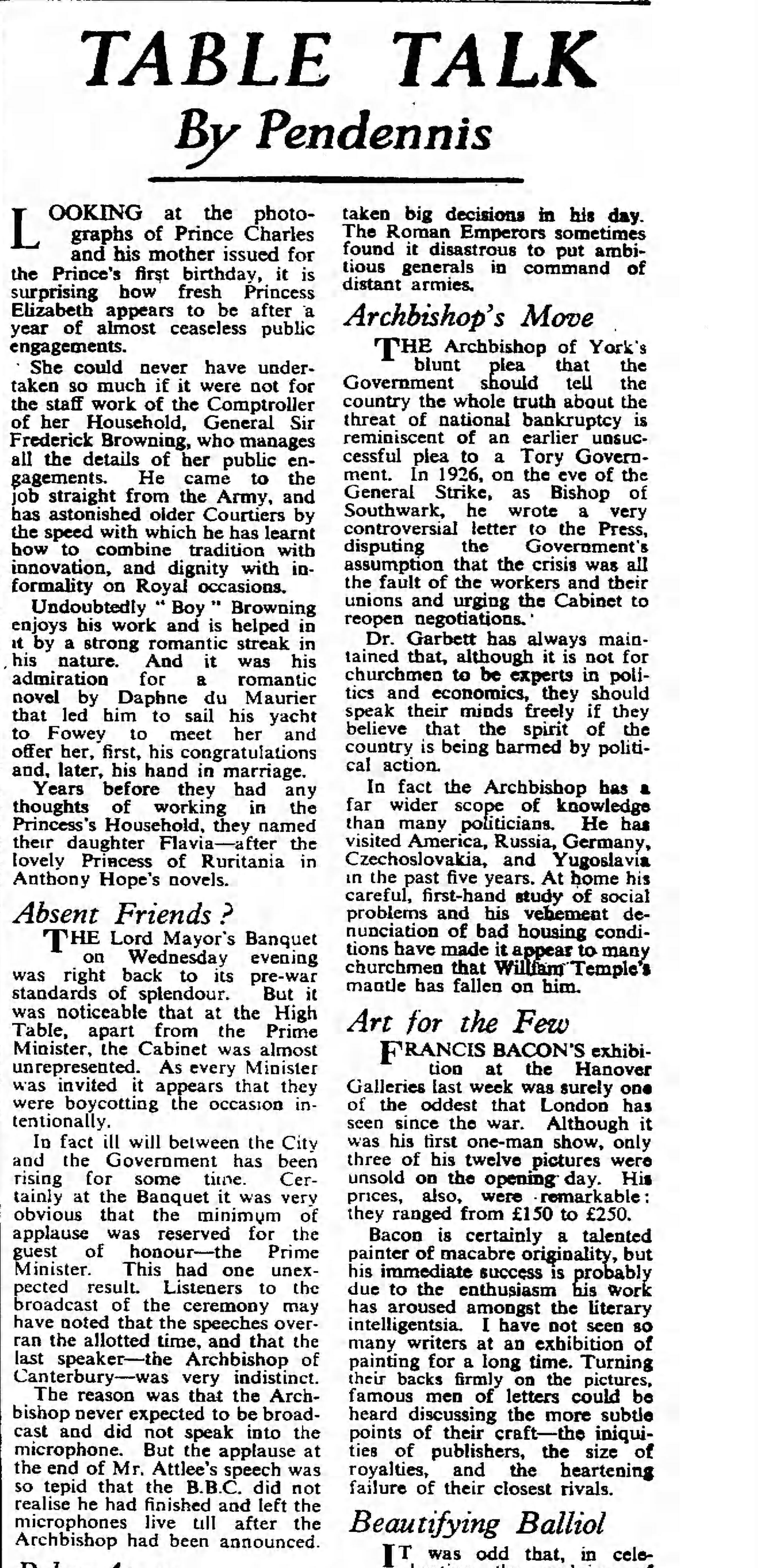
Pendennis. “Table Talk.” The Observer, 13 November 1949, p. 5 (Photo: Private Archive). A critical review of Francis Bacon’s exhibition at Hanover Gallery 1949 under the headline “Art for the Few”. 
Review by Eric Newton on the Paul Klee exhibition at Hanover Gallery in The Manchester Guardian, 20 June 1956, p. 7 (Photo: Private Archive). 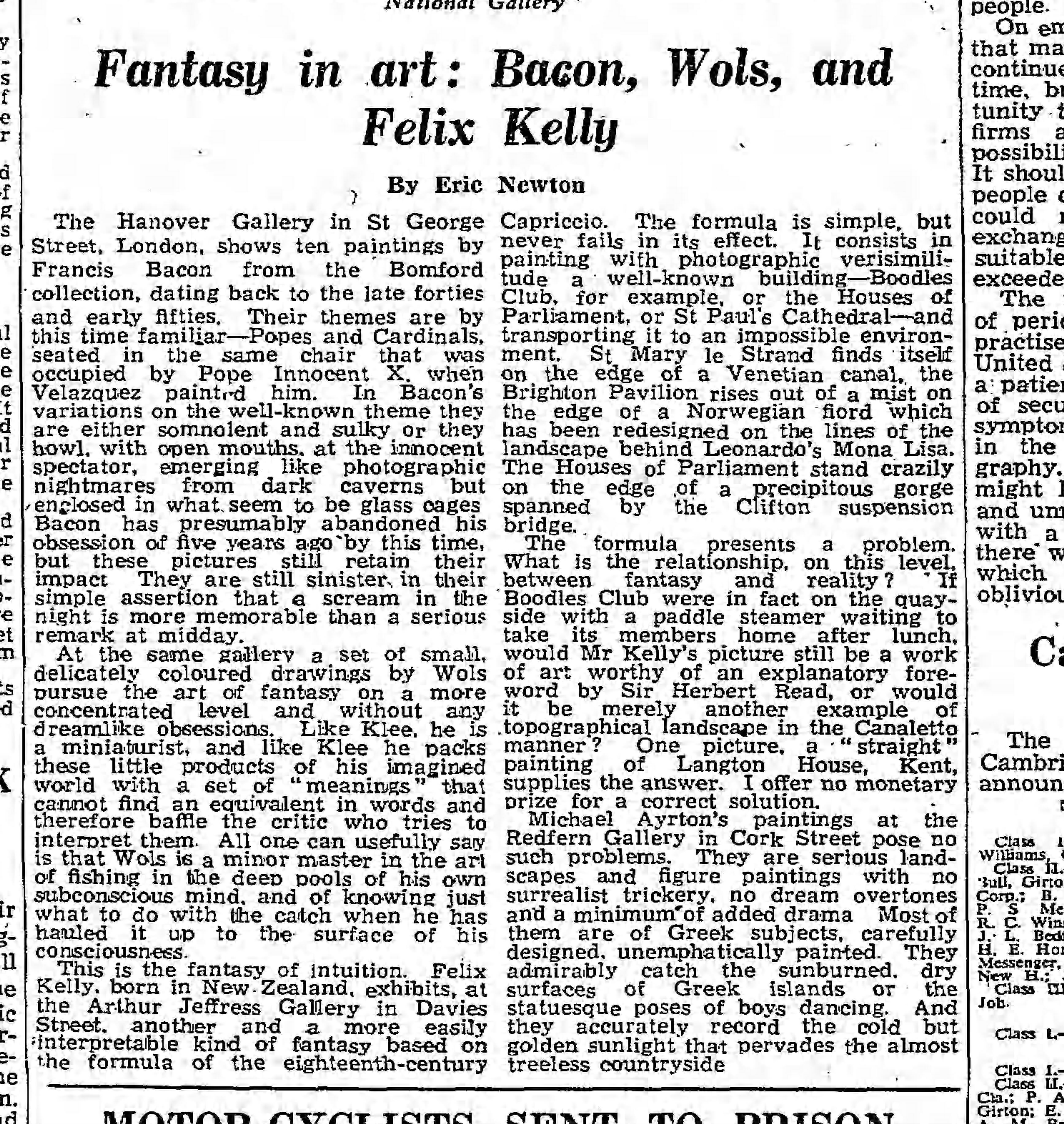
Eric Newton. “Fantasy in Art: Bacon, Wols, and Felix Kelly.” The Guardian, 12 June 1959, p. 3 (Photo: Private Archive). A review on Francis Bacon’s last exhibition at Hanover Gallery in 1959. 
Report on the art market in England with an entry on the Hanover Gallery (centre column) in the Swiss magazine Du, no. 10, 1959, p. 53 (Photo: Private Archive). Anonymous. “Wer ist wer im Kunsthandel. England.” Du, vol. 19, no. 10, 1959, p. 53.
Aronowitz, Richard, and Shauna Isaac. “Émigré Art Dealers and Collectors.” Insiders Outsiders. Refugees from Nazi Europe and their Contribution to British Visual Culture, edited by Monica Bohm-Duchen, Lund Humphries, 2019, pp. 129–135.
Bownes, David, and Oliver Green, editors. London Transport Posters. A Century of Art and Design. Lund Humphries, 2008.
Hedley, Gill. “Three female gallerists who changed the course of British art.” 29 September 2016, Royal Academy, https://www.royalacademy.org.uk/article/movers-and-shakers-female-gallerists-british-art. Accessed 27 January 2021.
Hedley, Gill. Arthur Jeffress. A Life in Art. Bloomsbury, 2020.
Liaut, Jean-Noël. The Many Lives of Miss K. Toto Koopman. Model, Muse, Spy. Translated by Denise Raab Jacobs, Rizzoli, 2013.
Mock, Jean-Yves. Erica Brausen. Premier Marchand de Francis Bacon. L’Échoppe, 1996.
Newton, Eric. “Paul Klee.” The Manchester Guardian, 20 June 1956, p. 7.
Newton, Eric. “Fantasy in Art: Bacon, Wols, and Felix Kelly.” The Manchester Guardian, 12 June 1959, p. 3.
Pendennis. “Table Talk.” The Observer, 13 November 1949, p. 5.
Private Wire. “Our London Correspondence.” The Manchester Guardian, 9 June 1948, p. 4.
Summers, Cherith. “Hanover Gallery.” Brave New Visions. The Émigrés who transformed the British Art World, exh. cat. Sotheby’s, St. George’s Gallery, London, 2019, p. 18. issuu, https://issuu.com/bravenewvisions/docs/brave_new_visions. Accessed 25 February 2021.
Taylor, Brandon. Art for the Nation: Exhibitions and the London Public 1747–2001 (The Barber Institute’s Critical Perspectives in Art History). Manchester University Press, 1999.
Word Count: 223
- 1947
- 1973
Erica Brausen
- London
- Burcu Dogramaci. "Hanover Gallery." METROMOD Archive, 2021, https://archive.metromod.net/viewer.p/69/1470/object/5145-11259705, last modified: 27-04-2021.
-
Ala StoryGalleristCuratorArt CollectorMuseums DirectorLondon
Originally from Vienna, Ala Story worked for galleries such as Redfern and Storran, opened the Stafford Gallery in 1938 and developed it into the British Art Centre.
Word Count: 26
Marlborough Fine ArtArt GalleryLondonMarlborough Fine Art was founded in 1946 by the Viennese emigrants Harry Fischer and Frank Lloyd in the Mayfair district, focused on Impressionists, Modern and Contemporary Art.
Word Count: 26
Modern Art GalleryArt GalleryLondonThe Modern Art Gallery, founded by the émigré painter, sculptor and writer Jack Bilbo, was a forum for the presentation of modern art, specialising in the work of emigrant artists.
Word Count: 30
St. George’s GalleryArt GalleryLondonIn 1943, the art dealer Lea Bondi Jaray, with support of Otto Brill, also exiled from Vienna, took over St. George’s Gallery in Mayfair, exhibiting contemporary British and continental art.
Word Count: 30